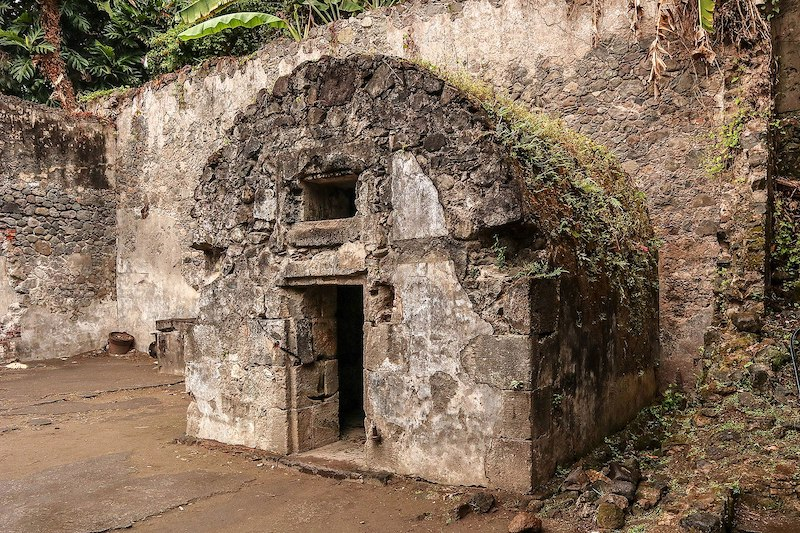On the morning of May 8, 1902, the bustling port city of Saint-Pierre on the island of Martinique was full of life. Markets were open, ships were docked in the harbor, and the city’s nearly 30,000 residents were going about their day unaware of the horror about to unfold. Just a few miles away, Mount Pelée, a volcano looming over the city, was rumbling with increasing intensity. Despite signs of trouble, few believed a major eruption was imminent.
That belief was shattered in an instant. At approximately 8:02 a.m., Mount Pelée exploded with unimaginable force. A superheated cloud of gas, ash, and volcanic debris, known as a pyroclastic flow, shot down the mountainside at over 100 miles per hour. Within minutes, Saint-Pierre was reduced to ashes. Nearly everyone perished. The city once called “the Paris of the Caribbean” was gone.

A Prison Cell That Saved a Life
As search crews navigated the devastation in the days that followed, a miracle surfaced from the rubble. Beneath the charred remains of the city stood a small, partially buried stone jail cell. Inside it, barely alive, was a prisoner named Ludger Sylbaris.

Locked away for disorderly conduct just the night before, Sylbaris had unknowingly been placed in what became the safest spot in Saint-Pierre. His cell was built into the thick stone foundation of the police station, with only a tiny slit for ventilation. While the intense heat and gases still reached him, the enclosed space protected him from the full force of the blast.
Though badly burned and struggling to breathe, Sylbaris survived. For four days he endured the hellish conditions inside the smoldering cell until he was discovered by rescue teams. Against all odds, he had lived through what many considered to be an apocalypse.
Video:
The Man Who Survived Doomsday | 100 Wonders | Atlas Obscura
Becoming a Living Legend
After recovering from his injuries, Sylbaris became a symbol of survival. His incredible story captured the imagination of the world. He was dubbed “The Man Who Lived Through Doomsday,” and for good reason. He had endured one of the deadliest natural disasters of the twentieth century, alone and entombed in darkness while an entire city disappeared above him.

Eventually, his tale caught the attention of the Ringling Brothers Circus in the United States. They offered him a chance to join their traveling show not just as an oddity, but as a man with a story to tell. Sylbaris embraced the role. Wearing a costume that displayed his scars and sharing his firsthand account of the eruption, he became one of the most talked-about acts in the circus.
Audiences were fascinated by the man who had outlived a volcano. His presence brought a human face to the tragedy and served as a living reminder of nature’s raw power.
Video:
They Thought They Were Safe: The Mount Pelée Disaster 1902 | Plainly Difficult Documentary
The Legacy of Ludger Sylbaris
Ludger Sylbaris passed away in 1929, but his story endures more than a century later. The cell that saved his life still stands today in the ruins of Saint-Pierre. Visitors to Martinique can walk through the remnants of the jail, touch its stone walls, and imagine what it must have felt like to be trapped in darkness while the world outside was reduced to fire and ash.
His life represents more than survival. It tells a story about the randomness of fate and the resilience of the human spirit. While others ran from the signs of eruption, he had no choice but to stay put and that involuntary isolation ultimately saved his life.

Remembering Saint-Pierre and Its Last Witness
The eruption of Mount Pelée remains one of the deadliest volcanic events in recorded history. But within that tragedy, Ludger Sylbaris stands out as a rare survivor whose life took an unexpected turn. From a prison cell to a circus stage, he transformed his trauma into testimony.
In remembering him, we also remember the city of Saint-Pierre and the thousands who never had the chance to escape. His survival gives voice to a lost community, and his courage in sharing it ensured that their story would never be forgotten.


